Last week, during the World Series, I read this hilarious article about the wonderful, wacky, crazy fifth game. This was the game when the Houston Astros fell behind, 4-0 and 7-4, and they were facing the best pitcher in baseball (Clayton Kershaw), yet somehow came back to win, 13-12. It was a game when impossible things happened, not just once but over and over again.
The author of the article wrote, “It was the absolute best baseball game. And also the absolute worst baseball game. But also the best! When you mix them together, it becomes a best-worst slurry … This was Poochie the baseball game, and it died on the way back to its home planet.”
This is an apt description of a chess game I played against Shredder last week. Like the baseball game, it was wonderful and silly and ridiculous and awful, all at the same time. What can I say? It was Poochie the chess game.
Let’s start with this position.
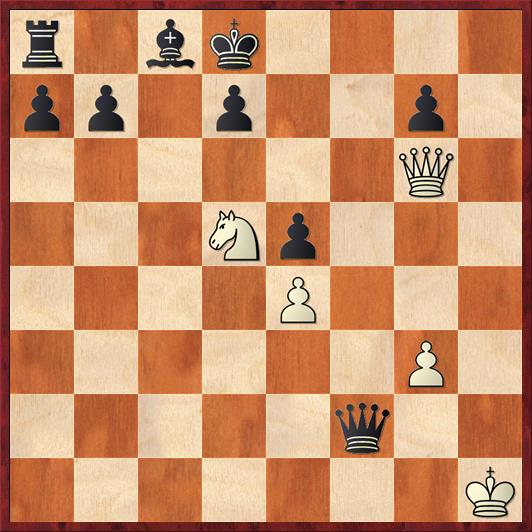 Position after 27. Kh1. Black to move.
Position after 27. Kh1. Black to move.
FEN: r1bk4/pp1p2p1/6Q1/3Np3/4P3/6P1/5q2/7K b – – 0 27
I kid you not. This is a real position that occurred in a real game. Shredder was Black, and its rating was set to 2220. I was White, and my rating was set to somewhere between Bumbling Idiot and Crazy Dreamer.
The first thing you wonder about this position is: What happened to all the White pieces? The second thing you wonder is: Why hasn’t Black moved anything besides his queen? And the third thing you wonder is: even with an 8-pawn material advantage, does Black actually have any way to win the game? It’s completely obvious that he can draw by perpetual check any time he wants to, but can he defend the threat of Qg5+ (or Qxg7) and Qe7 mate long enough to mobilize his queenside?
I invite my readers to give the position to any computer program in existence and see what it says. During the game, Shredder rated the position at an 8-pawn advantage for Black, which is logical because that’s how much material it is ahead by. When I gave the position to Rybka, it evaluated Black’s advantage at 5.09 pawns, and it obstinately refused to budge from that assessment even after two hours of analysis.
Nevertheless, I believe that the position is a draw!
It’s next to impossible for a typical chess engine to evaluate this position correctly because it’s not capable of schematic thinking. It just looks at moves and variations, and it gets caught up in the infinite variety of queen checks that Black can play.
Schematically, there are only two ways that Black can conceive of defending White’s threats. One is 27. … Qf8. But it’s pretty easy to see that White would then draw with 28. Qg5+ Ke8 29. Qh5+.
The other way for Black to extricate himself is 27. … d6. If White takes right away with 28. Qxd6+? Bd7 then I don’t have the key checking square on f8. I can vacuum up a whole lot of material with 29. Qc7+ Ke8 30. Qxe5+ Kf8 31. Qe7+ Kg8, but I don’t think it’s enough.
Instead after 27. … d6 28. Qxg7! now 28. … Bd7? does not work for Black because of 29. Qg5+! leading to mate. The only other option for Black is to defend with the queen. Thinking schematically, you ask yourself, given any number of moves, where can Black’s queen place itself to prevent checkmate? The only square is d7. Even if the queen can get there, which I doubt, White still gets a perpetual check with Qf8+. Of course, if White ever allowed … Qxe4+ and … Qxd5 it would be curtains, but White just has to make sure that Black can never capture the e-pawn with check.
Can Black could play some series of checks that would set up the move … d6 more advantageously? In fact, that is what Shredder tried to do: It played 27. … Qf3+ 28. Kh2 Qe2+ 29. Kg1 Qd1+ 30. Kf2 Qc2+ 31. Kf3 Qb3+ 32. Kf2 Qb2+ 33. Kf3 Qa3+ 34. Kg2.
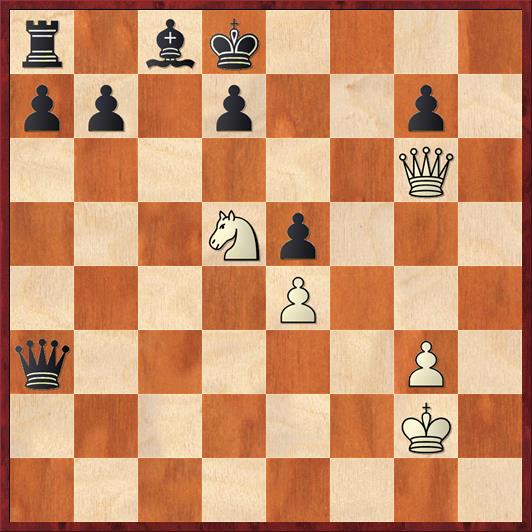 Position after 34. Kg2. Black to move.
Position after 34. Kg2. Black to move.
FEN: r1bk4/pp1p2p1/6Q1/3Np3/4P3/q5P1/6K1/8 b – – 0 34
Now there are a couple freeing moves that Black could try. 34. … b6 is met by 35. Qg5+ and 36. Qh5+, with a perpetual check as before. 34. … d6 is met by 35. Qxg7, and as discussed above, Black has to settle for a perpetual check. He can only win if he can take the e-pawn with check or play a timely bishop check, but if White is careful neither of those things are possible. (In this position 35. … Bh3+ is not timely but losing, as after 36. Kxh3 Black has no checks and no defense to White’s various mate threats. If 36. … Qa5 37. Qe7+ Kc8 38. Qe6+! Kd8 39. Qxd6+ Kc8 40. Ne7 mate.)
What happened instead was 34. … Qb2+ 35. Kf3 Qa3+ 36. Kg2 Qa2+ 37. Kf3 Qd2 38. Qxg7, and now I was extremely confident of drawing. Except that Shredder came up with an even worse idea: sacrificing its queen on d5! After 38. … Qd3+ 39. Kf2 Qd4+ 40. Kf3 Qd3+ 41. Kf2 Qc2+ 42. Kf3 Qb3+ 43. Kf2 it played 43. … Qxd5?? 44. ed d6.
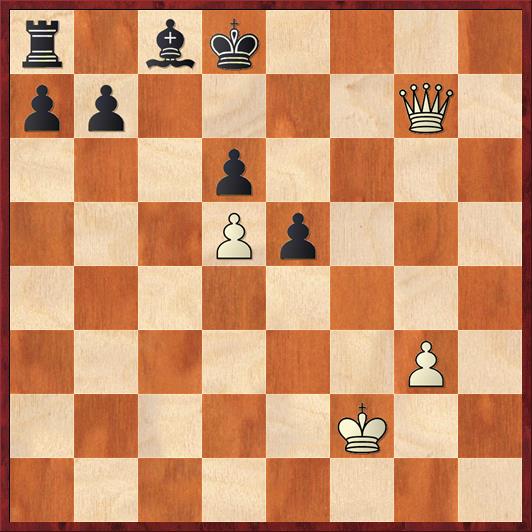 Position after 44. … d6. White to move.
Position after 44. … d6. White to move.
FEN: r1bk4/pp4Q1/3p4/3Pp3/8/6P1/5K2/8 w – – 0 45
In complete disbelief I played 45. Qf8+ Kc7 46. g4 a5 (Actually, giving up the rook with 46. … Bxg4 is slightly interesting, but I don’t think that Black can reach a fortress position — the weakness of the d6 pawn will be fatal) 47. g5. I think that the most appropriate finish would have been the pawn race 47. … a4 48. g6 a3 49. g7 a2 50. g8Q a1Q 51. Qd8+, after which White wins, in consecutive moves, Black’s bishop, rook, and queen. But actually Shredder played 47. … Kb6 and a few moves later I queened my pawn and it resigned.
Though I was pleased with my comeback, the truth was that I could not be very proud of this game. I had played so badly earlier, and I had just happened to blunder (literally) into a position that, by sheer good fortune, highlighted all the worst defects of computer chess.
So how, you might wonder, did I arrive at that sorry wreck of a position we saw in the first diagram? And how did the computer contrive to win eight pawns without moving any of its pieces besides its queen and king?
Here’s how. Warning: What you are about to see is very embarrassing, both for humans and computers (if computers can be embarrassed).
Dana — Shredder (40 moves/10 minutes)
Nimzovich Defense
1. e4 Nc6 2. d4 e5 3. d4 Nce7 4. g3 Ng6 5. h4 h5 6. Be2 Nf6 7. Bg5 c6 8. Bxf6 Qxf6
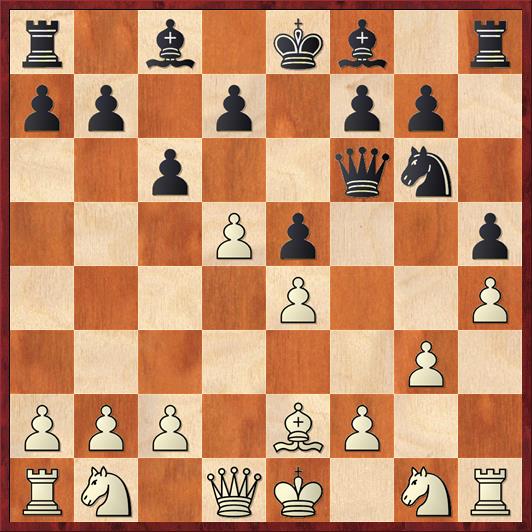 Position after 8. … Qxf6. White to move.
Position after 8. … Qxf6. White to move.
FEN: r1b1kb1r/pp1p1pp1/2p2qn1/3Pp2p/4P2P/6P1/PPP1BP2/RN1QK1NR w KQkq – 0 9
9. Bxh5? …
Oh, no. This can’t be good. Pawn-snatching, against a silicon tactical genius, in a position where it’s already ahead in development? What was I thinking? Answer: I wasn’t. I was in blitz chess mode, “take first, ask questions later.”
9. … Bc5
Of course. Normal defenses like 10. Nf3 or 10. Qd2 for White are already ruled out, so I’m already forced into a really awkward situation.
10. Bf3 cd 11. Qxd5? …
Here I should have just let Shredder have the pawn and try to catch up in development with 11. Nc3. But I was determined to pour kerosene onto the fire.
11. … Qb6 12. Nh3 Qxb2
Shredder, too, has never met a poisoned pawn it didn’t like. To be honest, this pawn isn’t very poisoned. I thought that the exchange sac would give me a lead in development and would trap his king in the center, as well as getting Black’s queen in trouble. But Black has a zillion ways out of the leaky trap.
13. Qxc5 Qxa1 14. O-O …
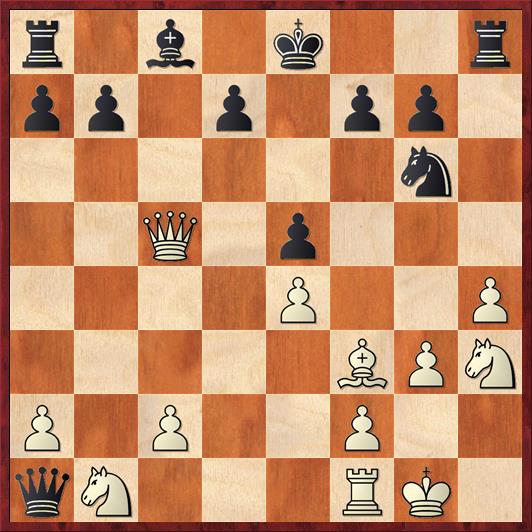 Position after 14. O-O. Black to move.
Position after 14. O-O. Black to move.
FEN: r1b1k2r/pp1p1pp1/6n1/2Q1p3/4P2P/5BPN/P1P2P2/qN3RK1 b kq – 0 14
14. … Qxa2?
From this point forward, I think that virtually every move for the machine and every move for me could get a question mark. Or an exclamation point. Or both. Like that baseball game, this game is a “best-worst slurry,” where bad moves are good and good moves are bad.
Here I think that the simple 14. … Qd4 completely gets Black out of trouble. But a really weird thing started happening here. On almost every move, the computer has the option of trying to get its pieces organized or grabbing material. And every time, it grabs the material.
15. Ng5? …
My play is also unbelievably good/bad. Here the best move would have been 15. Nc3, developing a piece and hitting Black’s queen. But I was worried about Black’s threat of … d6, simultaneously attacking my knight on h3 and my queen. So I decided to take care of that problem first. Except… 15. Ng5 just moves the knight from the frygbhtdcfxvxxying pan into the fire! (Sorry, my cat just walked on the keyboard as I was typing “frying.”)
15. … f6!
Great, says Shredder. I’ll add a piece to my growing collection of White pieces. The rest of the game is just a feeding frenzy, as the computer keeps eating my pieces without paying the slightest attention to the actual problems in its position — the exposed king and the undeveloped queenside.
16. Be2 fg 17. Bc4 Qa4 18. Qd5 gh
What the hell? Does it have time for this?
19. Qf7+ Kd8 20. Nc3 Qc6 21. Nd5 hg 22. fg …
I couldn’t believe it. Shredder has just voluntarily activated my rook for me. But there is a method to its madness.
22. … Qc5+ 23. Kg2 Qxc4 24. Qxg6 Qxc2+ 25. Rf2 …
And now comes the moment of truth.
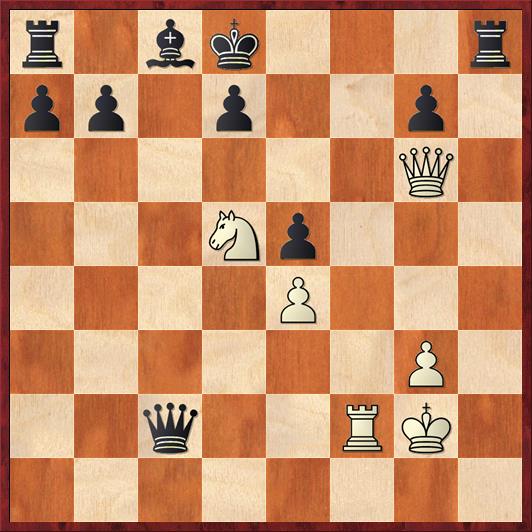 Position after 25. Rf2. Black to move.
Position after 25. Rf2. Black to move.
FEN: r1bk3r/pp1p2p1/6Q1/3Np3/4P3/6P1/2q2RK1/8 b – – 0 25
It sounds ridiculous to say “Black to play and win” when Black is eight pawns ahead, but that is the situation. Black has only one winning move, and to find it, the machine has to distinguish between the “real win” and the “fake win.”
25. … Rh2+??
Fail! The correct move is 25. … Qc1!! This elegant move threatens mate on h1, defends against Qg5+, and prepares … Qh6, trading queens and defusing White’s attack.
In some sense the fact that Black wins with 25. … Qc1 means that Black’s play was “correct” all along. Yet I would adamantly maintain that Black’s play was utterly misguided. In a totally winning position, where it was already three or four pawns ahead, it should never have let the game get to the point where it has only one move to keep from drawing or even losing.
26. Kxh2 Qxf2+ 27. Kh1 …
and we have now reached the position we started with, where in spite of its eight-pawn advantage the computer cannot win.
I think that the royal and ancient game of chess will never recover from the damage done by this comedy of errors!


